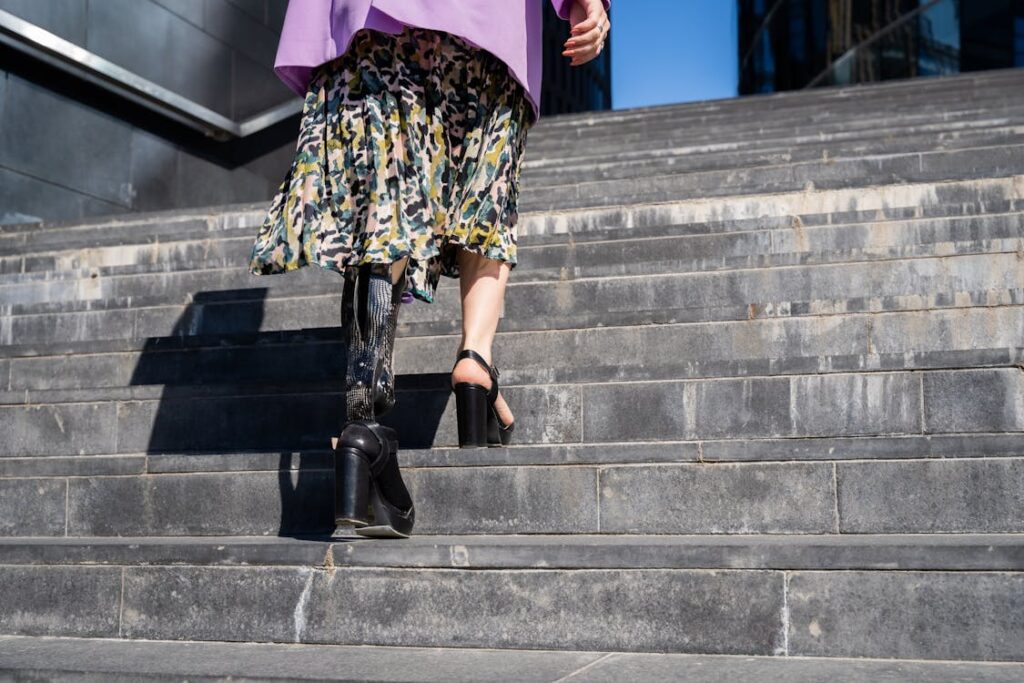The Indian judicial system is meant to uphold justice for all citizens, including persons with disabilities. However, accessibility in courts remains a major challenge, despite strong legal protections. While India has laws such as the Rights of Persons with Disabilities (RPwD) Act, 2016, which mandate accessible public spaces, many courts across the country still lack basic facilities for persons with disabilities. From physical barriers like staircases and inaccessible restrooms to procedural challenges like lack of sign language interpreters and digital accessibility, these obstacles make it difficult for persons with disabilities to seek justice.
The Supreme Court and High Courts have taken steps toward making the legal system more inclusive, but the ground reality remains far from ideal. Many district courts and lower courts, where the majority of cases are heard, continue to be largely inaccessible. This creates a situation where persons with disabilities are unable to represent themselves effectively, face delays in justice, or must rely on others to navigate the system.

Legal Framework for Court Accessibility in India
India has several laws and policies aimed at ensuring that persons with disabilities have equal access to public spaces, including courts. However, despite these legal mandates, implementation remains inconsistent.
Understanding the legal framework is essential to assessing how well Indian courts comply with their obligations toward accessibility.
Rights of Persons with Disabilities (RPwD) Act, 2016
The Rights of Persons with Disabilities (RPwD) Act, 2016, is the primary law governing disability rights in India. It mandates that all government buildings, including courts, must be accessible to persons with disabilities. Under this Act, courts must provide:
- Physical accessibility, including ramps, elevators, accessible restrooms, and designated seating.
- Assistive services, such as sign language interpreters, Braille and audio formats for court documents, and accessible digital case records.
- Reasonable accommodations, meaning that persons with disabilities should be given the necessary support to participate in legal proceedings without discrimination.
The Act also empowers individuals to file complaints against authorities that fail to provide accessibility, making it a crucial tool for holding courts accountable.
Supreme Court Guidelines on Court Accessibility
The Supreme Court of India has recognized the need for accessible courts. In 2007, the Court directed all High Courts to conduct accessibility audits and ensure that persons with disabilities could navigate judicial spaces without barriers.
In 2021, the Supreme Court itself took steps to improve accessibility by upgrading its website for visually impaired users, introducing screen reader-friendly documents, and making video conferencing more inclusive.
However, while the Supreme Court and some High Courts have made progress, district and lower courts lag behind.
Many do not have ramps, wheelchair-friendly infrastructure, or digital accessibility tools, making it extremely difficult for persons with disabilities to participate in hearings.
Constitutional Provisions and the Right to Equality
The Constitution of India guarantees equal access to justice under Article 14 (Right to Equality) and Article 21 (Right to Life and Personal Liberty).
The denial of accessibility in courts can be seen as a violation of these fundamental rights, as it effectively prevents persons with disabilities from exercising their legal rights.
The Public Interest Litigation (PIL) mechanism has been used in several cases to demand better accessibility in courts.
In some instances, High Courts have issued directives for improving infrastructure and ensuring that judicial proceedings accommodate persons with disabilities. However, without strict monitoring and enforcement, compliance remains limited to select courts.

Challenges Faced by Persons with Disabilities in Indian Courts
Despite strong legal protections, the reality of court accessibility in India remains far from inclusive. Persons with disabilities face numerous barriers that make it difficult to seek justice, navigate legal proceedings, and participate in hearings.
These challenges range from physical barriers in court buildings to procedural difficulties in accessing legal documents and services.
Physical Barriers in Court Infrastructure
Most courts in India, particularly district and lower courts, are housed in old buildings with poor accessibility. Many of these structures lack ramps, elevators, or wheelchair-accessible restrooms, making it extremely difficult for persons with mobility impairments to move freely.
Even in High Courts, where some accessibility improvements have been made, wheelchair users often struggle with uneven flooring, narrow corridors, and lack of accessible seating in courtrooms.
Parking facilities for persons with disabilities are also inadequate. In many courts, there are no reserved parking spots, forcing individuals to navigate long distances over uneven paths to reach courtrooms.
The absence of clear signage, tactile pathways, and Braille instructions further adds to the difficulty for persons with visual impairments.
Lack of Assistive Services in Court Proceedings
For persons with hearing impairments, the lack of sign language interpreters in courts is a major barrier.
Although the RPwD Act, 2016, mandates assistive services in public institutions, most courts do not provide real-time captioning, assistive listening devices, or qualified interpreters. This makes it nearly impossible for deaf individuals to follow legal proceedings effectively.
Similarly, persons with visual impairments face challenges in accessing legal documents, case files, and court orders, as most of these materials are available only in print format.
The Supreme Court and a few High Courts have taken steps toward digitizing court records and making them screen reader-friendly, but lower courts still rely heavily on paper-based documentation, leaving blind litigants and lawyers at a disadvantage.
Procedural Complexities and Bureaucratic Hurdles
Legal procedures in India are complex and highly bureaucratic, making it difficult for persons with disabilities to file petitions, submit affidavits, or attend hearings without assistance.
Many courts lack dedicated help desks for persons with disabilities, forcing them to rely on family members, legal representatives, or court clerks for procedural guidance.
Moreover, the long waiting hours in congested court premises, the lack of accessible seating areas, and delays in case hearings create additional hardships for persons with disabilities.
Individuals with chronic health conditions, neurological disabilities, or age-related impairments often struggle to sit through prolonged sessions without proper accommodations.
Digital and Virtual Accessibility Issues
In recent years, Indian courts have adopted virtual hearings and e-filing systems, especially after the COVID-19 pandemic. While this has improved access for some persons with disabilities, the transition to digital platforms has also exposed new challenges.
Many court websites and online case management systems do not meet global accessibility standards, making it difficult for persons with disabilities to navigate them using assistive technologies like screen readers.
Many virtual hearings are not captioned for persons with hearing impairments, and sign language interpretation is rarely provided.
The lack of alternative communication methods, such as text-based interaction or AI-powered legal assistance, further limits participation for individuals with disabilities who rely on non-traditional modes of communication.

Judicial Interventions and Landmark Cases on Court Accessibility
Over the years, courts in India have recognized the need for accessibility and have issued significant rulings to improve the situation.
Public Interest Litigations (PILs) filed by disability rights activists and organizations have led to important judicial interventions, compelling courts to take steps toward making their infrastructure and processes more inclusive.
Supreme Court’s Directives on Court Accessibility
The Supreme Court has acknowledged the barriers faced by persons with disabilities in accessing the judicial system.
In 2017, the Court issued a directive requiring all High Courts to conduct accessibility audits of their premises and submit reports on the status of disabled-friendly infrastructure.
The objective was to ensure that courts complied with the Rights of Persons with Disabilities (RPwD) Act, 2016, which mandates accessibility in public buildings.
In 2021, the Supreme Court took a step forward by upgrading its official website to be screen reader-friendly. The initiative aimed to assist visually impaired individuals, lawyers, and litigants in accessing court records and legal documents.
While this was a welcome move, it highlighted the stark difference between accessibility improvements in the Supreme Court and the poor conditions in lower and district courts, where digital accessibility remains minimal.
Delhi High Court’s Intervention in Disability Inclusion
The Delhi High Court has been proactive in addressing disability rights, particularly in court accessibility. In a landmark case, the court ruled that all public institutions, including judicial buildings, must comply with universal design principles to make spaces accessible.
The court also directed lower courts to provide real-time captioning services, sign language interpreters, and assistive listening devices for deaf litigants.
Additionally, the Delhi High Court has issued orders ensuring that wheelchair users and persons with mobility impairments have priority access to elevators and designated seating areas inside courtrooms.
However, enforcement remains inconsistent, with many litigants still reporting difficulties in navigating the system.
Madan Mili v. Union of India (2021) – Digital Accessibility for Persons with Disabilities
In Madan Mili v. Union of India, a petition was filed challenging the inaccessibility of government and judicial websites for persons with disabilities.
The Supreme Court recognized that many High Court and district court websites did not meet global digital accessibility standards, making it difficult for visually impaired users to file petitions, read orders, and access case updates.
The Court directed the Ministry of Electronics and Information Technology (MeitY) and the Department of Justice to ensure that all official court websites were compliant with Web Content Accessibility Guidelines (WCAG), an international standard for digital accessibility.
While progress has been slow, some High Courts have started making their online platforms more inclusive.
Public Interest Litigations for Physical Accessibility
Several disability rights organizations have filed PILs demanding better infrastructure in district courts. In one such case, the Bombay High Court ordered the Maharashtra government to conduct a state-wide audit of court premises and submit a timeline for making them wheelchair accessible.
Similar interventions in Karnataka, Tamil Nadu, and West Bengal have led to gradual improvements in select courts, though widespread implementation remains a challenge.
These cases demonstrate that while courts are aware of the need for accessibility, real change is slow and dependent on continued legal pressure and advocacy.
The disparity between higher courts (which have made some progress) and lower courts (where accessibility remains largely ignored) highlights the urgent need for a nationwide enforcement mechanism.

Steps Needed to Improve Court Accessibility in India
While judicial interventions and legal mandates have pushed for better accessibility in Indian courts, actual implementation remains inconsistent.
To create a truly inclusive legal system, a systematic, nationwide approach is necessary. Addressing both physical and digital accessibility, training legal professionals, and ensuring strict enforcement of laws are key to making the judiciary more inclusive for persons with disabilities.
Upgrading Court Infrastructure for Physical Accessibility
The most immediate change required is the physical restructuring of court buildings to meet accessibility standards. Many courts, especially district and lower courts, lack ramps, elevators, accessible seating, and restrooms for persons with disabilities.
Retrofitting these buildings with universal design principles should be made a priority.
Every court must conduct an accessibility audit and create an action plan with deadlines to remove barriers.
These audits should be done in consultation with disability rights organizations and architects specializing in inclusive design to ensure that changes meet the needs of persons with disabilities.
Additionally, accessible public transportation to courts must be improved. Many persons with disabilities struggle to reach court buildings due to a lack of wheelchair-friendly public transport.
The judiciary and local governments must collaborate to provide priority transport services, reserved parking spaces, and accessible entrances to ensure equal access.
Providing Assistive Services in Legal Proceedings
Courtrooms must accommodate persons with disabilities by offering assistive services such as sign language interpreters, captioning, and audio descriptions.
Deaf individuals should have access to real-time transcription services, while visually impaired individuals should be provided with Braille versions or screen-reader-friendly digital formats of court documents.
Additionally, courts should implement priority scheduling for persons with disabilities to reduce long waiting hours, which can be physically exhausting.
This would allow disabled litigants and witnesses to attend hearings at specific time slots, minimizing unnecessary delays and discomfort.
A dedicated disability assistance desk should also be established in all courts. This would help individuals navigate the judicial system by providing guidance on filing petitions, understanding legal rights, and accessing support services.
Ensuring Digital Accessibility in E-Courts and Virtual Hearings
With courts shifting toward e-filing and virtual hearings, ensuring digital accessibility is just as important as improving physical infrastructure.
All court websites, e-filing systems, and online case portals must comply with Web Content Accessibility Guidelines (WCAG) so that persons with disabilities can use screen readers and other assistive technologies.
Virtual hearings should include live captions, sign language interpretation, and alternative text communication options to accommodate persons with different disabilities.
The use of AI-powered transcription services can make legal proceedings more inclusive, allowing individuals with hearing or speech impairments to fully participate in cases.
The Supreme Court’s initiative to improve its digital accessibility must be extended to High Courts, district courts, and tribunals to ensure uniform standards across the judiciary.
Training Judges, Lawyers, and Court Staff on Disability Inclusion
Legal professionals play a key role in ensuring accessibility, yet many judges, lawyers, and court staff lack awareness about the challenges faced by persons with disabilities.
Sensitivity training programs should be made mandatory for all members of the judiciary to help them understand how to accommodate disabled litigants, lawyers, and witnesses.
Law schools must also incorporate disability rights and legal accessibility into their curriculum. Future lawyers and judges should be trained in handling cases involving disability rights violations, reasonable accommodations, and the implementation of accessibility laws.
By educating legal professionals, courts can ensure that accessibility is not just an afterthought but an integral part of the judicial system.
Strict Monitoring and Enforcement of Accessibility Standards
One of the biggest obstacles to court accessibility is the lack of enforcement. Despite legal mandates under the RPwD Act, 2016, many courts continue to ignore accessibility requirements. To address this, there should be regular monitoring and accountability measures in place.
The government must appoint independent accessibility auditors to conduct surprise inspections of courts and report non-compliance. Courts failing to meet accessibility standards should face penalties or funding cuts until they implement necessary changes.
Additionally, persons with disabilities should have a direct grievance redressal system, allowing them to file complaints if they face barriers in accessing the judiciary.
These complaints should be addressed swiftly, ensuring that individuals do not have to fight lengthy legal battles just to secure their basic rights.

The Role of Disability Rights Organizations and Public Advocacy
Ensuring accessibility in Indian courts is not just the responsibility of the judiciary—disability rights organizations, activists, and legal advocacy groups play a crucial role in pushing for reforms.
Over the years, sustained activism and legal petitions have driven positive changes, but much work remains to be done.
Legal Advocacy and Strategic Litigation
Many accessibility improvements in Indian courts have come as a result of Public Interest Litigations (PILs) filed by disability rights groups.
These legal actions have forced the government and judiciary to take court accessibility seriously. Organizations such as the National Centre for Promotion of Employment for Disabled People (NCPEDP) and the Disability Rights India Foundation (DRIF) have actively worked to hold courts accountable for their obligations under the RPwD Act, 2016.
Filing PILs and seeking court-monitored implementation of accessibility mandates is an effective way to ensure real change.
If courts themselves remain inaccessible, persons with disabilities must use the legal system to demand reforms—a strategy that has led to improvements in both physical infrastructure and digital accessibility in recent years.
Public Awareness and Media Pressure
One of the reasons accessibility issues remain unaddressed is the lack of public awareness. Many people, including legal professionals, do not fully understand the struggles persons with disabilities face in accessing courts.
Media coverage of accessibility failures—such as wheelchair users being carried up court stairs due to lack of ramps—has often triggered public outrage and pressured authorities to act.
Disability rights organizations must continue engaging with news outlets, social media platforms, and public forums to expose gaps in accessibility.
By sharing real-life experiences of individuals who have struggled with the court system, activists can increase public pressure on the government to prioritize reforms.
Community Engagement and Grassroots Movements
Change is most effective when it begins at the grassroots level. Parents of children with disabilities, disability self-help groups, and legal aid organizations must work together to demand local-level accessibility improvements.
In many cases, disability activists have successfully convinced district and lower courts to install ramps, elevators, and assistive devices through direct engagement with court administrators.
Establishing local committees of disabled litigants, lawyers, and activists can ensure that court accessibility remains a priority and that violations are reported quickly.
Corporate and Institutional Support for Accessibility
Beyond legal and public advocacy, corporate entities and non-profits can also contribute to accessibility reforms. Many multinational companies and law firms have corporate social responsibility (CSR) programs focused on disability inclusion.
These resources can be directed toward funding accessibility projects, such as installing assistive technology in courts, sponsoring legal aid for persons with disabilities, or developing digital accessibility tools for court documents.
Collaboration between the judiciary, disability organizations, and private institutions can accelerate accessibility improvements. With sustained pressure from all stakeholders, the dream of a fully inclusive judicial system in India can become a reality.

A Comparative Look: Court Accessibility in Other Countries
While India has taken some steps toward making its courts accessible for persons with disabilities, a comparison with other countries highlights both best practices and areas where India lags behind.
Looking at international models can provide valuable insights into how accessibility reforms can be effectively implemented in the Indian judicial system.
United States: The Americans with Disabilities Act (ADA) Model
The United States has one of the most advanced legal frameworks for disability rights, primarily due to the Americans with Disabilities Act (ADA), 1990. Under this law, all federal, state, and local courthouses must be fully accessible. This includes:
- Mandatory wheelchair access in all court buildings, with clear regulations on ramp gradients, elevator access, and restroom modifications.
- Real-time transcription and sign language interpretation services for individuals with hearing impairments.
- Braille and digital screen reader-friendly documents to assist visually impaired persons in accessing legal records.
- Dedicated accessibility coordinators in courthouses who assist persons with disabilities throughout legal proceedings.
Unlike in India, where lower courts remain largely inaccessible, the ADA requires uniform compliance across all courts in the U.S., ensuring that even the smallest county courts adhere to strict accessibility guidelines.
United Kingdom: Legal Assistance and Reasonable Adjustments
In the United Kingdom, the Equality Act, 2010, mandates that persons with disabilities must have equal access to the justice system. The UK courts provide:
- Flexible court procedures, allowing persons with disabilities to submit evidence remotely or attend hearings virtually if needed.
- Dedicated disability liaison officers in major courts to assist individuals with disabilities in navigating the legal system.
- Priority scheduling for persons with disabilities to avoid long waiting times in physically demanding environments.
The UK also emphasizes reasonable adjustments, meaning courts must make case-by-case modifications to ensure that persons with disabilities can fully participate in legal proceedings.
These adjustments include providing quiet rooms for neurodivergent individuals, allowing assistance animals in courtrooms, and modifying questioning techniques for persons with cognitive disabilities.
Australia: Technology and Remote Access
Australia has made significant advancements in using technology to improve court accessibility. The country’s Disability Discrimination Act, 1992, requires courts to provide:
- Fully accessible online court services, where persons with disabilities can file cases, review legal documents, and attend virtual hearings using assistive technology.
- AI-powered speech-to-text services to assist individuals with hearing impairments during legal proceedings.
- Accessible jury duty policies, ensuring that persons with disabilities are not excluded from serving as jurors and that necessary accommodations are provided.
India can learn from Australia’s use of digital accessibility, particularly in ensuring that e-courts and online case filing systems are inclusive for persons with disabilities.
What India Can Learn from Global Models
A common theme across the U.S., UK, and Australia is that disability accessibility is built into the legal framework of the judicial system, rather than being treated as an afterthought.
Unlike India, where implementation remains inconsistent, these countries enforce strict compliance measures to ensure that all courts, regardless of size or location, meet accessibility standards.
For India to bridge the gap, it must:
- Make court accessibility legally enforceable, with penalties for non-compliance.
- Expand the use of assistive technology, ensuring that digital court services are accessible to all.
- Introduce dedicated accessibility officers in courts to assist persons with disabilities.
- Ensure uniform implementation across all courts, not just at the Supreme Court and High Court levels.
By adopting these global best practices, India can move toward a truly inclusive judicial system, where every citizen—regardless of ability—has equal access to justice.
Conclusion
Equal access to justice is a fundamental right, yet Indian courts remain largely inaccessible to persons with disabilities. Despite strong legal mandates under the RPwD Act, 2016, many courts, especially at the district and lower levels, lack ramps, elevators, assistive services, and digital accessibility. Procedural complexities, absence of sign language interpreters, and inaccessible online platforms further restrict participation.
While the Supreme Court and some High Courts have taken steps toward accessibility, progress remains slow and inconsistent. Lessons from countries like the U.S., UK, and Australia show that strict enforcement, technological integration, and dedicated accessibility officers can transform the judicial system into an inclusive space.
To bring real change, Indian courts must commit to infrastructure upgrades, digital accessibility, assistive legal services, and disability awareness training for legal professionals. Disability rights organizations, public advocacy, and legal interventions will continue to play a crucial role in holding the judiciary accountable.
True justice is only possible when everyone—regardless of disability—can access the courts without barriers. Ensuring full accessibility in Indian courts is not just a legal obligation; it is a step toward a more equitable and just society.



